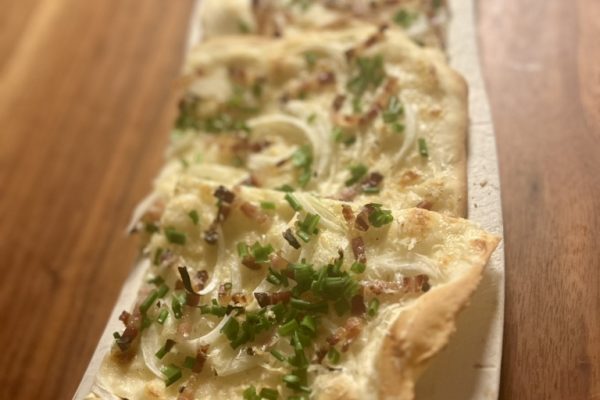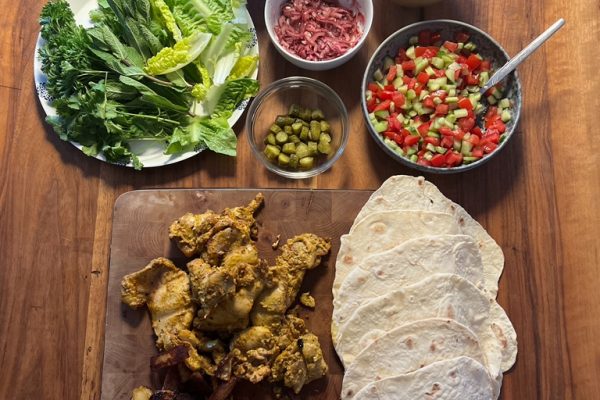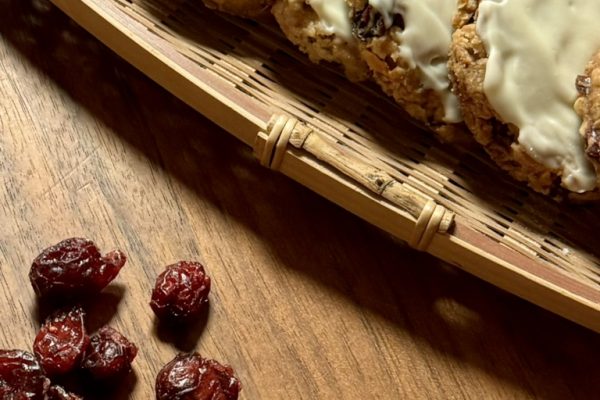The flatbread “Ramazan pidesi” is baked in Turkey during the fasting period of Ramadan (hence the name), in other countries it might be offered all year round. In Germany, where many people of Turkish origin live, it can be found everywhere.
There are different recipes and many contain egg. The egg white is used in the dough and the yolk is used to coat the bread before baking. We leave this out, it is not necessary for a delicious result and causes the bread to spoil very quickly.
We replace the egg with yoghurt (and we are not the first to do so). Our recipe contains milk as well as yoghurt. If you want to bake vegan, simply replace the milk with water, but you have to think about what can be used instead of the yoghurt. If you omit the egg and yoghurt, the dough would become too firm.
If you possess a food processor, you have an advantage. Flour, yeast, water, milk (or just water), yoghurt, olive oil and salt according to the list of ingredients at the end of this recipe are formed into a dough for 10 minutes with a dough hook on low speed. By hand it also takes a good 10 minutes, but just with manual work. A long piece of music can help to use this time wisely (suggestion for the right dynamic: Telegraph Road by Dire Straits).

When the dough has taken on a soft, consistent shape and comes away from the bowl, it should look like this:

The dough will still be a little sticky, as is the case with any dough before you have given it time to rise. In this case, it should rest for 45 minutes at a mildly warm temperature. The best place for this is the oven, with only the light on.

After these 45 minutes, the dough is still moist and therefore a little sticky, but it is easy to form into a ball without any further flour and then roll it out about 2 cm thick. We do this on an inverted baking tray (so there are no obstructive edges) and a Silpat mat. An alternative would be baking paper, but here you can find information on why the baking mat is the better solution.

Again, cover the dough with a cloth and let it rest for another 15 – 20 minutes. The yeast will cause it to rise further during this time.
Afterwards, the typical pattern for this bread is formed with the fingertips.

Press the dough all the way to the bottom. Don’t worry, it won’t tear. In the end, this picture emerges:

Instead of using egg yolk, we take a piece of kitchen paper (or a clean kitchen towel), moisten it well and dab the surface of the flatbread with it. Then we sprinkle it with white sesame seeds and nigella seeds (a great spice that is used far too rarely). If you don’t have nigella, sesame alone is fine too, but it’s only authentic with both, and that’s in terms of taste, not appearance.
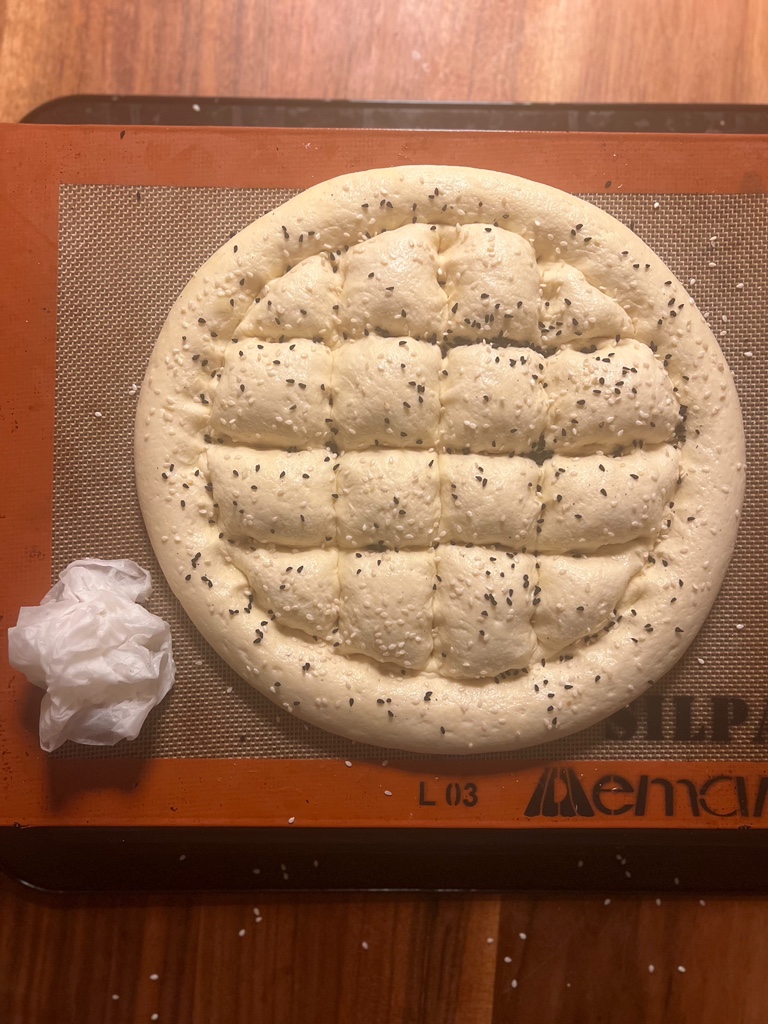
Now bake the bread for approx. 20 minutes in the oven preheated to 220 degrees on the middle rack. From minute 17, keep checking until the colour is to your liking.
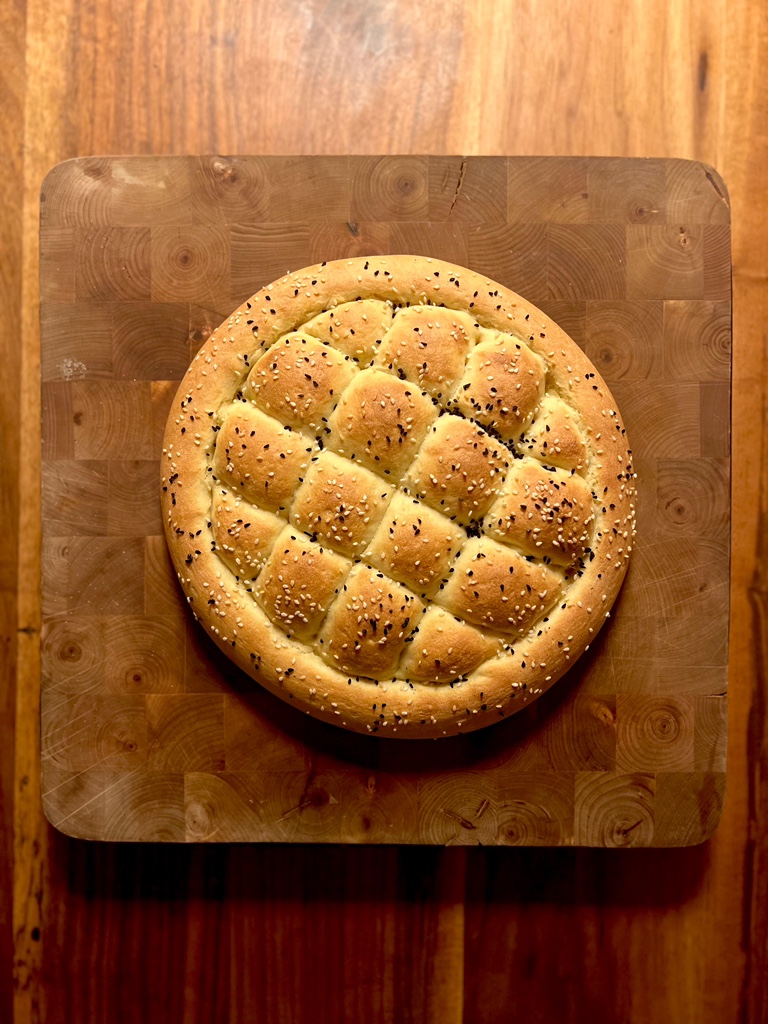
This bread, like any flatbread, is ideally eaten immediately; it dries out quickly. A plastic bag is therefore recommended for storing it after it has cooled. Then you can enjoy the bread for days, but you should cut it open, brush it with a little olive oil and toast it briefly in a very hot pan:

Enjoy.
And may the taste be with you.
Ingredients ( for 4 people):
500 g flour (a standard flour is quite sufficient).
7 g dry yeast (or three times the amount of fresh yeast)
150 ml milk
150 ml water
25 g yoghurt
a little olive oil
3 level teaspoons salt
Sesame seeds
Nigella seeds

